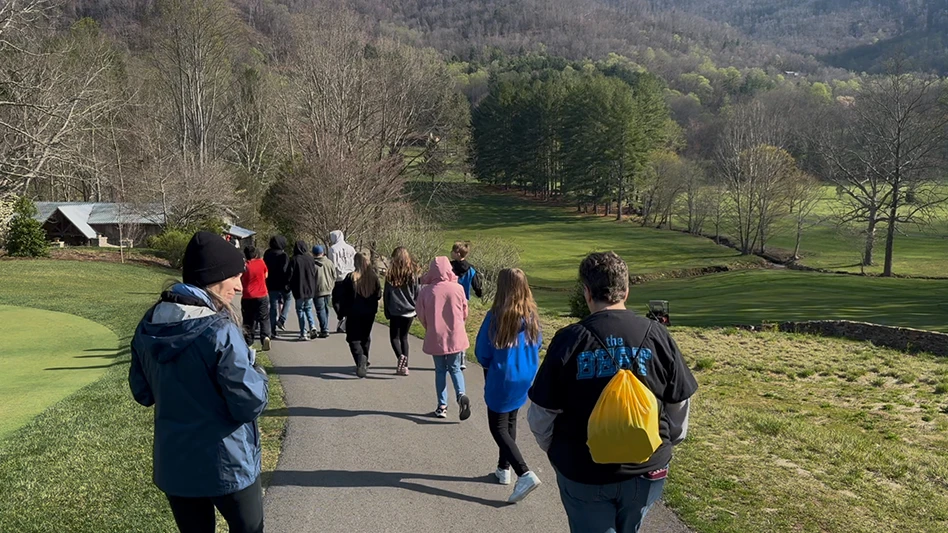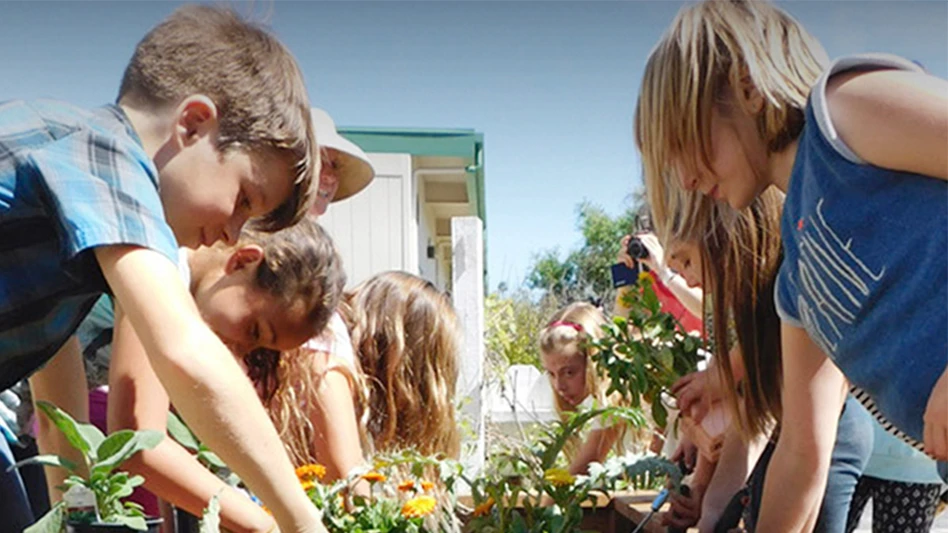The prime feature of any golf course is the turf that we maintain on a daily basis. Ornamental plantings have nothing to do with the playing surface of our great game but when planned and placed strategically they enhance our clubhouse/pro shop facilities and the entire course.
I have enjoyed working with ornamental plantings on the various golf course facilities that I have managed over the years. All but one of these facilities was managed without the aid of a horticulturist. There are a few keys that I believe can assist superintendents in successfully managing their horticulture programs.
Knowledge/Education
Horticulture is a field that is rapidly changing with the development of new plants and designs. There are many ways you can improve your knowledge on this topic.
The Internet is a great reference to use for descriptions of plants and bed design. Photos of plants and combinations of many types and styles of beds are a click away.
Junior colleges, evening adult-education classes, garden centers, state extension services, botanical gardens and regional and or state turf conferences offer classes from one hour to full semesters.
Join a local golf course horticulturist or nurseryman/landscape association. Attend meetings and learn from experts who work primarily with plant material and have years of experience. Their business requires that they are current with the best new plants and trends in the industry. When you attend local golf course superintendent association outings, check out the planting beds and take pictures. Visit commercial properties for ideas on different plant material and design. Most of these properties were designed by a professional architect and are managed by trained horticulturists. Remember, ornamental plantings are changed on a regular basis.
Remember the soil
The soil is the foundation of a planting bed. A well-drained soil will grow the best plants. A great way to build the soil of a new bed is by incorporating compost, leaf mold, manure and or peat moss. This material is available from most mulch suppliers or from city or county yard waste facilities. You can also begin the process of making your own compost from leaves that drop on the golf course. Also, do not forget to mulch your beds lightly to prevent weeds from germinating and reduce the loss of water. I like using compost material for my annual beds because it will be tilled under and takes less time to break down in comparison to mulch.
Site selection
There are a number of factors I try to keep in consideration when planning an ornamental bed. High visibility areas such as the clubhouse, main patio area, teeing ground or near green complexes are the best sites. The first tee and last hole catch a golfer’s attention at the beginning and the end of the round. Some club facilities host group functions, such as banquets and weddings, in which the guests do not leave the immediate clubhouse area. These areas provide first impressions for all guests who visit your facility.
Automatic irrigation is important for plant survival and labor savings. Place soaker hoses around clubhouse plantings to reduce building damage and high water bills.
Know the amount and type of sun your planting bed will receive during the day. A full-sun plant in a shaded bed area will result in a weakened plant and less than attractive overall display.
Annuals and Perennials
I’ve used both plant types over the years together and separately with success. The benefits of annuals include mass plantings with diverse color combinations and less space for weeds. Season-long blooms and plant designs can be changed on an annual basis.
Perennials do not require new plants every year. In fact, multiple plants can be made from divisions after just a few seasons. However, while less overall maintenance is needed for overall plant health, they do require upkeep.
The use of trees, shrubs and ornamental grasses can fill the space of a bed, provide structure and seasonal beauty.
My facility has a number of very attractive perennial beds designed years ago. Some of these beds are in need of rejuvenation which is a part of the required maintenance for perennials. I place a few annuals in spaces near walk paths that provide a little more depth of color for the perennial bed.
We do grow our own plugged products in a greenhouse on the property. Most of the plants are annuals and are planted in the most highly visible areas of the clubhouse, patio and pro shop. The beds are planted with 1,500 tulips each fall and then are tilled under for the annuals in May after the tulips have finished their blooming cycle.
Our plant material is a zero-dollar cash outlay after we have our yearly plant sale to the membership. Also, I utilize plant brokers from our area who have expanded knowledge of plant varieties and have put me in contact with the best growers for purchasing.
Bed size and planting guidelines
I would rather make a few large beds with mass plantings than a large number of small beds with a few plants. Smaller beds create obstacles for mowing equipment and also get lost in the landscape. Building too many beds that cannot be maintained is a serious mistake. If it cannot be maintained, it should not be built.
Each plant has specific guidelines for spacing. Plants properly spaced compliment one another and will enhance the characteristics of the plant such as its color, form and or texture. Plants not properly spaced look lonely and afraid to show their true color. You see more of the ground or mulch than of the plant, plus it leaves space for weeds to overrun a bed. Use a color wheel to identify plants whose blooms work well in combination.
Attitude is everything when working with ornamentals on the golf course. It is obvious when visiting a facility where the superintendent understands the importance of maintaining an ornamental program to the highest level. Great turf along with well-maintained ornamental plantings compliment one another and can set you and your facility apart from the competition. GCI
Joe Wachter, CGCS, is superintendent at Glen Echo Country Club in St. Louis.

Explore the May 2010 Issue
Check out more from this issue and find your next story to read.
Latest from Golf Course Industry
- The Aquatrols Company hires marketing manager
- Renovating Bredemus in West Texas
- Renovation starts at Okatie Creek GC at Sun City Hilton Head
- The Fittest Podcast in Turf: Episode 1
- New 6-hole course debuts in Oklahoma
- GCSAA announces Grassroots Ambassador Leadership Award recipients
- Reel Turf Techs: David Gummo
- PBI-Gordon promotes two to executive level





